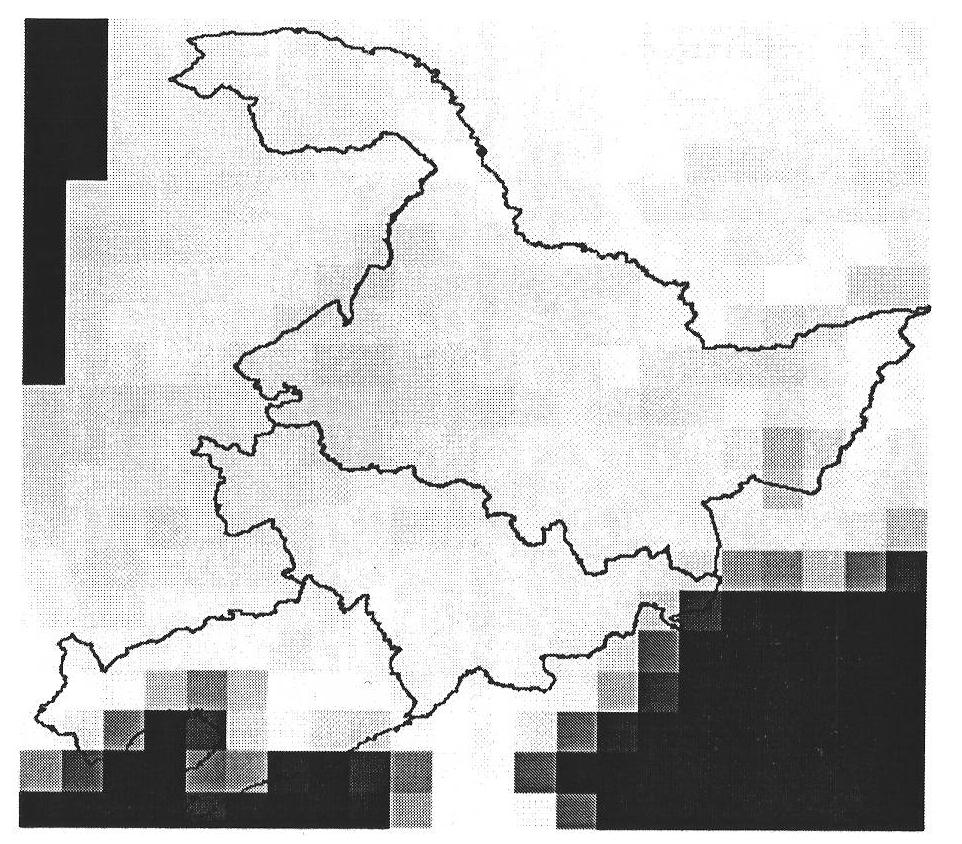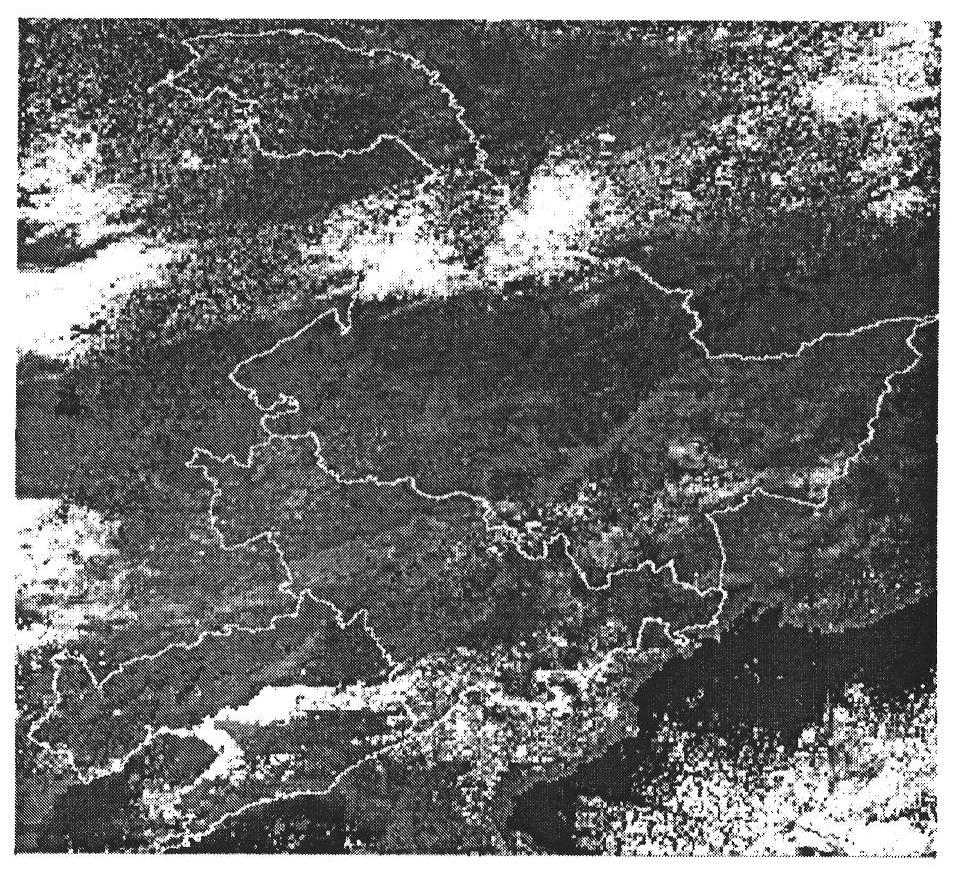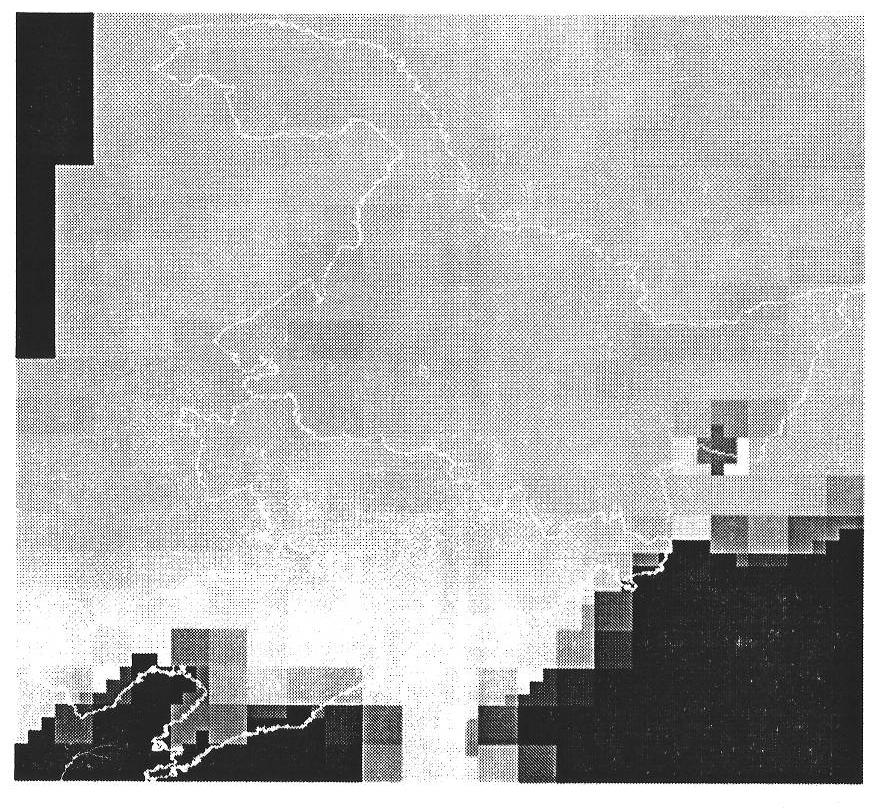Microwave remote sensing pixel element decomposing method based on land and water living beings classifying information
A hybrid pixel decomposition and land object classification technology is applied in the field of microwave remote sensing hybrid pixel decomposition based on water and land object classification information, which can solve the problem of poor data inversion accuracy, low spatial resolution of microwave remote sensing data, and limited data application scope. problems, such as high spatial resolution, and the effect of improving spatial resolution
- Summary
- Abstract
- Description
- Claims
- Application Information
AI Technical Summary
Problems solved by technology
Method used
Image
Examples
Embodiment 1
[0093] Embodiment 1: The present invention uses MWRI microwave remote sensing data and MODIS spectral remote sensing data, combined with the microwave remote sensing mixed pixel decomposition method based on the classification information of water and land objects, to realize the observation of water and land in the three provinces of Northeast China on November 17, 2009. Efficient Decomposition of Boundary Microwave Mixed Cells.
[0094] Technical scheme of the present invention comprises the following steps:
[0095] 1. Remote sensing data preprocessing:
[0096] (1) Download MWRI L1 level microwave remote sensing data from Fengyun Satellite Remote Sensing Data Service website, which has been preprocessed by calibration, atmospheric correction, geographic correction and standardization;
[0097] The data collection time is November 17, 2009 local time, which is the global orbital descent data. Considering that the comprehensive spatial resolution of MWRI is 75km, all its c...
Embodiment 2
[0167] Embodiment 2: The present invention uses AMSR-E microwave remote sensing data and MODIS spectral remote sensing data, combined with the microwave remote sensing mixed pixel decomposition method based on the classification information of water and land objects, to realize the super large scale in Yongji County, Jilin Province on September 28, 2010 Decomposition of microwave mixed pixels on water and land boundaries in flood disaster observation area.
[0168] Technical scheme of the present invention comprises the following steps:
[0169] 1. Remote sensing data preprocessing:
[0170] (1) Download the AMSR-E L2A microwave remote sensing data from the AMSR-E microwave remote sensing data website, which has been preprocessed by calibration, atmospheric correction, geographic correction and standardization;
[0171] The data collection time is July 28, 2010, local time, which is the global de-orbit data. The integrated spatial resolution of AMSR-E is 25km, and all its ch...
PUM
 Login to View More
Login to View More Abstract
Description
Claims
Application Information
 Login to View More
Login to View More - R&D
- Intellectual Property
- Life Sciences
- Materials
- Tech Scout
- Unparalleled Data Quality
- Higher Quality Content
- 60% Fewer Hallucinations
Browse by: Latest US Patents, China's latest patents, Technical Efficacy Thesaurus, Application Domain, Technology Topic, Popular Technical Reports.
© 2025 PatSnap. All rights reserved.Legal|Privacy policy|Modern Slavery Act Transparency Statement|Sitemap|About US| Contact US: help@patsnap.com



